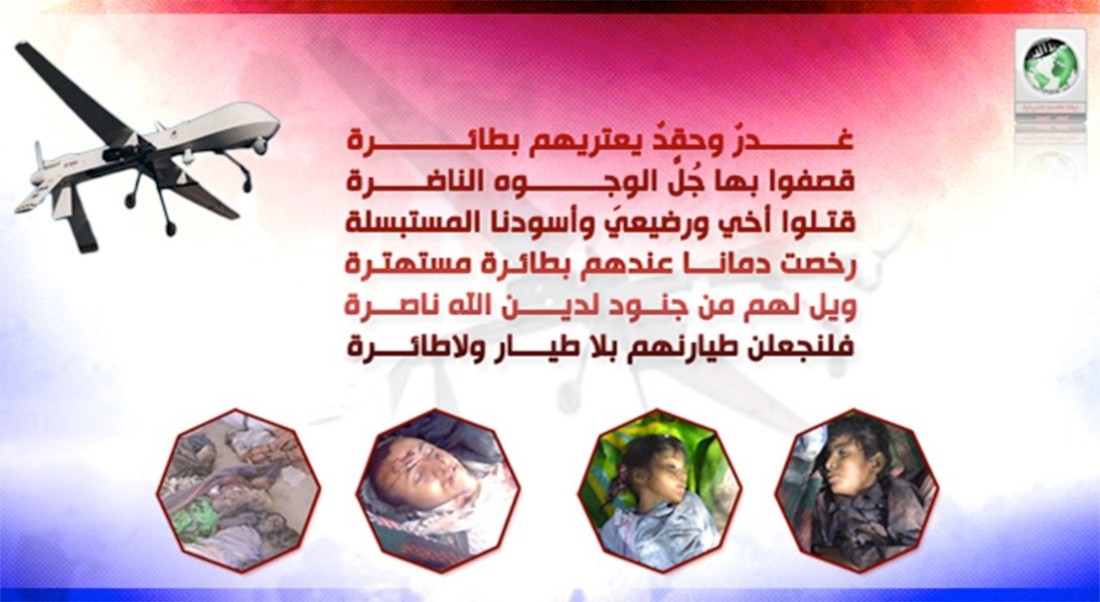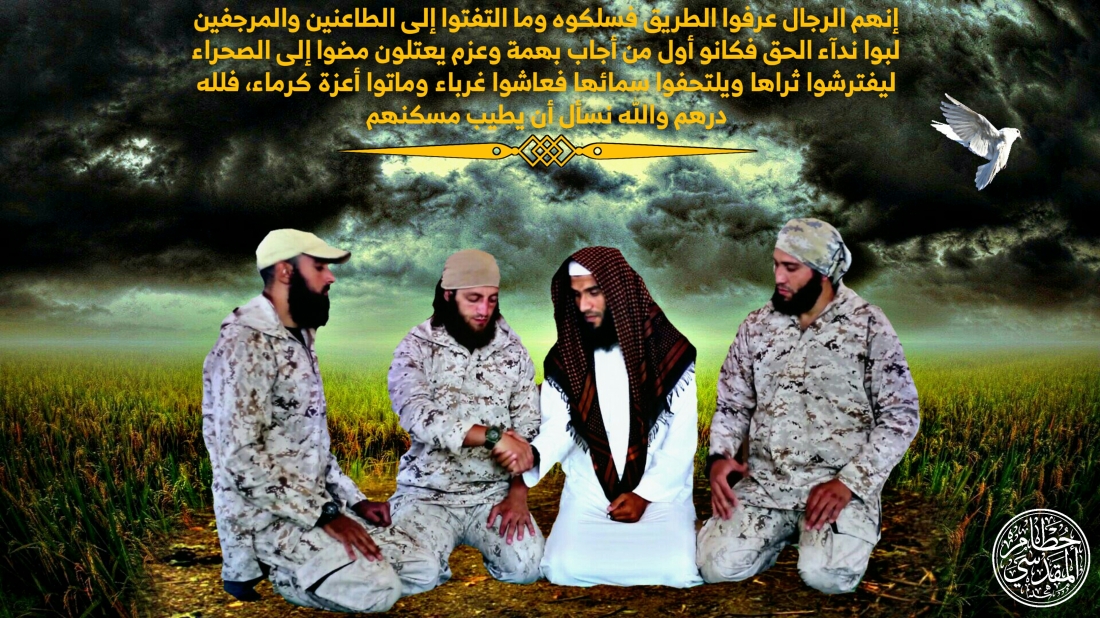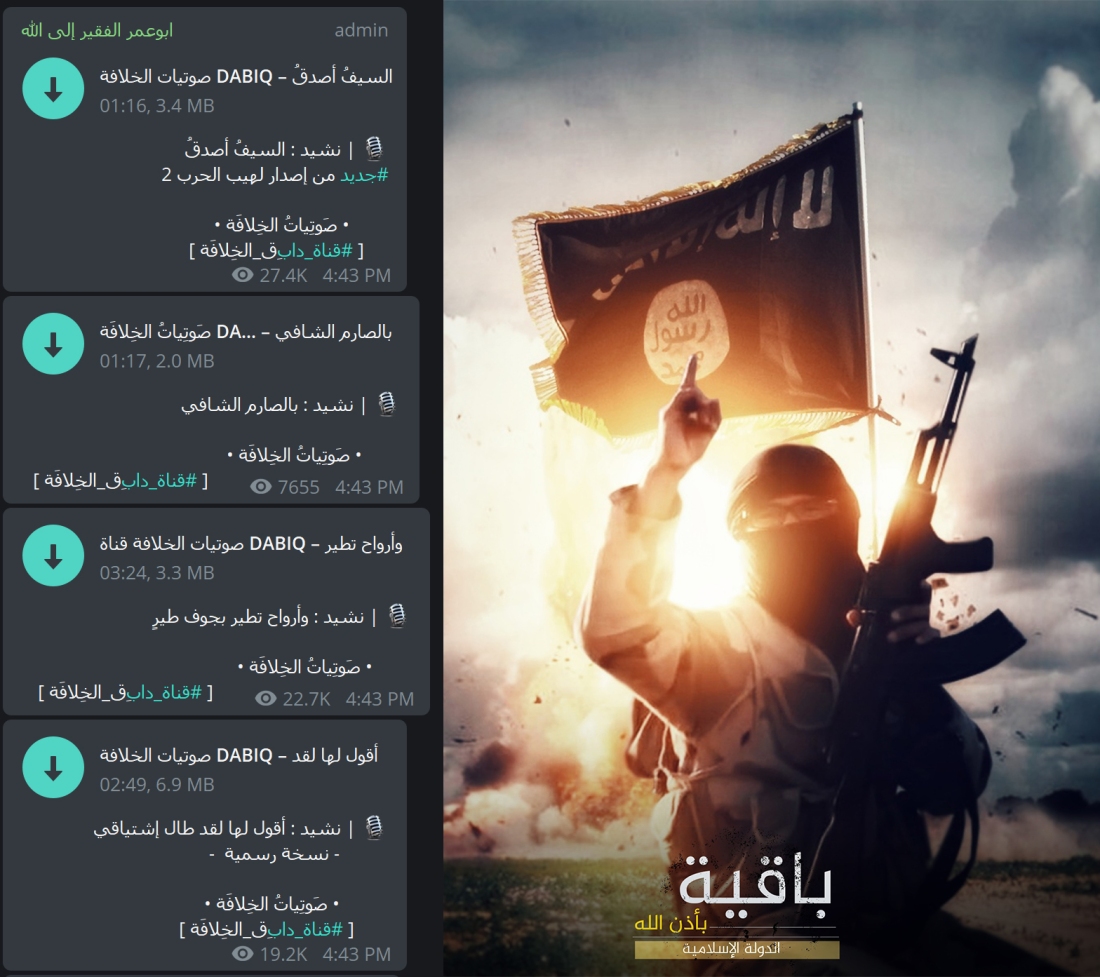Abu Yahya al-Libi, whose real name was confirmed after his death by Ayman al-Zawahiri as Hassan Muhammad Qa’id,[1] was killed in a drone strike in Pakistan in June 2012. He had been a prolific ideologue, appeared frequently on jihadist media outlets, and was highly respected for his life dedicated to jihad.[2]
Any spy placed among jihadist networks in the field, naturally, poses a most grave threat. For one, the spy submits information resulting either in drone or aerial strikes against meeting places, safe houses, routes used for travel and the like. In other cases, the intelligence submitted by spies among the Mujahidin enables Special Forces to grab and kidnap high-value-targets with the ambition to gain further information by torture as had been made public in recent years by Human Rights Watch.[3]
Jihadi and Salafi networks are targeted by intelligence agencies worldwide since 9/11 with the intention to attain credible, accurate and timely information from within physical networks of radical groups. For this purpose various approaches and techniques are applied. One modus operandi may consist of the attempt to develop an elaborate approach to place agents, perhaps consisting in most cases of Arabs posing as Muslims, inside Islamic communities in general. The objective of this strategy could be to build up a relationship with individuals of the Islamic communities, ideally who are members or sympathizers of radical groups, who are considered as vulnerable. This vulnerability can consist of either discontent or discern in regards of the radical group; for whatever reason, may it be due to theology, the hierarchy of the group, or personal – it does not matter. The vulnerability enables recruiters of intelligence services to attempt to ‘turn’ or ‘flip’ the member of the group, who nevertheless had been a member before his contact with the field agent, or the asset of an intelligence operator. While such ‘agents’ are a golden nugget for intelligence agencies, they pose the greatest threat to any group or network. This makes trust costly, as jihadi groups are forced to develop and employ ‘counter-intelligence’ mechanisms to minimize the possible betrayal of individual group members.
The U.S. led global engagement against al-Qa’ida after the 9/11 attacks, termed as the “war on terror.” This oftentimes is only possible by using human intelligence. That is, to deploy agents or assets in the field or operational theatres with the aim and intention of infiltrating jihadi groups, cells, or structures in general. Aside of military operations and strikes, a global network has been crafted since the attacks on the U.S. in 2001 to find, locate and identify targets as well as to collect “intelligence” – information of military, technical or operational value.[4] To gain information graded as intelligence, all means of classical and modern espionage techniques is since 9/11 legit and permitted. The work of agents, spies and informants has since been reassessed and is not even restricted to the modus operandi of domestic U.S. intelligence agencies in their ambition to root out radicalized individuals.[5] However, U.S. or Saudi citizens, or locals receiving money in exchange for information, are the most potent threat to jihadi groups in general that operate in countries where drones are used to annihilate ideologues, leaders, media workers, and militants. In recent years, information collected by paid informants, infiltrators or by torturing incarcerated suspected jihadi members, has resulted in targeted assassinations by unmanned drones. As subsequently detailed, the threat of spies among the Mujahidin has become an integral part of the media as well as an important ideological factor. The ideological factor is covered by clerics such as Abu Yahya al-Libi who has had a big impact for the jihadi media.
The danger a spy poses is countless, as highlighted in this chapter, while the jihadi propaganda focuses on the spies’ work to mark and designate targets on the ground to be struck by the seemingly omnipresent unmanned drones.
Human intelligence gathering as opposed to just technical information is still of the greatest value – for spies among the Mujahidin are able to interpret information and thus submit military graded intelligence on which decisions to strike can be made rapidly.
The deaths of high ranking ideologues and leaders by missiles fired from unmanned aerial vehicles, that have in the past years become the operational backbone of the “war on terror”, have risen and seem to be the operational weapon of choice by military planners.[6] According to Paul Cruishank, drone “strikes had a reputation jihadist circles of being very effective”[7] in the tribal areas of Pakistan and needless to say this accounts to operational theatres elsewhere. With ideologues and media-valued activists such as U.S. citizens Anwar al-Awlaqi and his media operator Samir Khan[8] killed in Yemen in 2011, or the targeted killing of the Libyans ‘Attiyatullah and Abu Yahya in 2012 in Pakistan only highlight prominent drone operations recently. Nevertheless, the extrajudicial killing of al-Awlaqi and Khan did not kill off the English jihadi magazine Inspire that had published a new edition in May 2012 under the title “winning on the ground.” This ninth edition (Winter 1433 / 2012) addressed its readers on the cover page, asking
“does the assassination of senior jihadi figures have any significance in validating Obama’s claims? After a decade of ferocious war, who is more entitled to security?”[9]
According to the Middle East Policy Council, drones are deployed and in action not just in Afghanistan and Pakistan, but also in the Horn of Africa, the Arab Peninsula, as well as North Africa.[10]
Perhaps more than ever, the military command and the intelligence community as such is dependent on classical sources and means to acquire information to identify targets on the ground for the technical high-end gadgets. Innocent civilians or bystanders are defined as ‘collateral damage’ and in some cases cannot be clearly distinguished from ‘insurgent elements’. For the jihadi media departments, filmed sequences of killed civilians and destroyed houses are a win-win situation. Maimed bodies of civilians buried under rubble are proof of the inhumane crusader aggression targeting Muslim civilians, in particular women and children, in a quest to annihilate Islam. Nevertheless, the civilian population especially in the Afghan-Pakistani border area is severely effected by the Jihadi groups there, such as the Tehrik-e Taliban-Pakistan (TTP) and AQ affiliated torrents, and has to bear the military responses by the Pakistani army as well as the U.S. operated drones in their efforts in the war on terror in Afghanistan and Pakistan. It may be asserted that the U.S. operated drone program has similar affects on local populations as in Pakistan, although the decree of quantity differs from country to country. According to The Long War Journal, 354 drone strikes had taken place inside Pakistan[11] and 95 bombing runs in Yemen.[12] The impact of frequent or more regularly occurring drone strikes on the people on the ground is devastating and generates new grievances with innocents being either mistaken for legitimate targets or are nevertheless considered as acceptable collateral damage.[13] The long-term side affects of drone warfare are open for debate, however, the tales of drone strikes and civilian suffering as a result of missile strikes have become a frequent narrative for jihadi videos and forums[14] and are also addressed by scholars[15] and journalists[16] alike.
Killed civilians, mainly children, are pictured in jihadist propaganda material with the vow for revenge. In the picture below, published by the Shumukh al-Islam Forum in early May 2014, the administration of the forum via its media “workshop” (warsha) responded to the continuing drone activity inside Yemen that had recently killed a number of AQAP operatives. The “official account of warsha shumukh al-Islam for incitement” of the Shumukh al-Islam forum on Twitter promoted both pictures and a video.[17] The picture below relates the death of children to call for revenge on a wider scale; some of the shown victims are from the al-Malahem video “The House of Spider Webs.” Parts of the text read,

“(…) our blood is cheap for them and their reckless air craft;
Doom (wail)[18] is theirs by the hands of the soldiers fighting on behalf of the religion of God;
We thus will indeed attack their airports – without aircrafts or drones [but by deploying suicide-bombers].”[19]
[1] Asad al-‘ilm wa-l-jihad Abu Yahya al-Libi, as-Sahab Media, September 2012. In his many writings, he had often given his real name next to his kunya.
[2] For further details on al-Libi and on al-Zawahiri’s eulogy, refer to the subchapter The New Martyrs of the Internet – the Death of AQ’s Second-in-Command, Abu Yahya al-Libi, Eulogized by Ayman al-Zawahiri.
[3] Two documents by HRW are striking in this context; Delivered into Enemy Hands, Human Rights Watch, September 2009, http://www.hrw.org/sites/default/files/reports/libya0912webwcover_1.pdf; and: Double Jeopardy: CIA Renditions to Jordan, Human Rights Watch, April 2008, http://www.hrw.org/sites/default/files/reports/jordan0408webwcover.pdf.
[4] The United States in particular has intensified its spending and also extended the freedom of its intelligence communities since 9/11. Although the various agencies are unified under the Director of National Intelligence (http://www.dni.gov/index.php); interagency mistrust continues. Reuters, Post 9/11 U.S. Intelligence Reform takes Roots, Problems Remain, http://www.reuters.com/article/2011/09/08/us-sept11-intelligence-idUSTRE78714D20110908, September 8, 2011.
[5] The media has frequently reported about the use of agent provocateurs by the F.B.I or other law-enforcement agencies. In some cases, individuals had been spurred by three or four others claiming being al-Qa’ida members, but are in reality undercover agents to commit attacks, providing fake weapons and explosives. After the individual’s demonstration of his commitment and readiness, the undercover policemen busted the wanna-be jihadis when they embarked on the fake car bombs driving to the target location, or when they accepted the non-functional weapons. This modus operandi of the F.B.I. has been analysed in a report by The Center for Human Rights and Global Justice (CHRGJ) at New York University School of Law, entitled “Targeted and Entrapped: Manufacturing the “Homegrown Threat” in the United States”, available at http://www.chrgj.org/projects/docs/targetedandentrapped.pdf, accessed February 27, 2013.
For a summary of this critical study: Targeted and Entrapped: Manufacturing the “Homegrown Threat” in the United States, Jadaliyya, Targeted and Entrapped: Manufacturing the “Homegrown Threat” in the United States,
http://www.jadaliyya.com/pages/index/1620/targeted-and-entrapped_manufacturing-the-homegrown, May 18, 2011, accessed February 27, 2013.
[6] Leila Hudson, Colin S. Owens, David J. Callen, Drone Warfare in Yemen: Fostering Emirates through Counterterrorism? In: Middle East Policy Council. http://www.mepc.org/journal/middle-east-policy-archives/drone-warfare-yemen-fostering-emirates-through-counterterrorism?print. Accessed December 2, 2012.
[7] Paul Cruishank, The 2008 Belgium Cell and FATA’s Terrorist Pipelines, The Sentinel, April 2009, https://www.ctc.usma.edu/posts/the-2008-belgium-cell-and-fata%E2%80%99s-terrorist-pipeline.
[8] Aliyah Shahid, Larry McShane, Anwar al-Awlaki and Samir Khan dead, Al Qaeda propagandists killed by U.S. missile strikes in Yemen, The New York Times, September 30, 2011, http://www.nydailynews.com/news/world/anwar-al-awlaki-samir-khan-dead-al-qaeda-propagandists-killed-u-s-missile-strikes-yemen-article-1.958584.
[9] Inspire, 9th edition Winter 1433/2012. The theme of this edition is dedicated to the U.S. drone warfare program that, however, enables AQAP in Yemen to win over the hearts and minds of the people.
[10] Leila Hudson, Colin S. Owens, David J. Callen, Drone Warfare in Yemen: Fostering Emirates through Counterterrorism? In: Middle East Policy Council. http://www.mepc.org/journal/middle-east-policy-archives/drone-warfare-yemen-fostering-emirates-through-counterterrorism?print. Accessed December 2, 2012.
[11] Bill Roggio and Rob Barry, Charting the data for US air strikes in Pakistan, 2002-2014, The Long War Journal,
http://www.longwarjournal.org/pakistan-strikes.php, May 6, 2014.
[12] Bill Roggio and Rob Barry, Charting the data for US air strikes in Yemen, 2002-2014, The Long War Journal, http://www.longwarjournal.org/multimedia/Yemen/code/Yemen-strike.php, May 6, 2014.
[13] Living under Drones – Death, Injury, and Trauma to Civilians From US Drone Practices in Pakistan, Stanford Law School, New York School of Law, http://livingunderdrones.org/wpcontent/uploads/2012/09/Stanford_NYU_LIVING_UNDER_DRONES.PDF. September 25, 2012.
[14] The Shumukh al-Islam Forum published a video and pictures allegedly showing the aftermath of drone strikes in Yemen. Severe wounded civilians and maimed bodies of children underline the AQ narrative demanding “safe the oppressed Muslims of Yemen from the bombardments of the American and the assaults of the coward tyrant”, Warsha Shumukh al-Islam al-tahridiyya, Yemen al-Islam tunadi (Yemen of Islam cries out), https://shamikh1.info/vb/showthread.php?t=222363, May 8, 2014. Within than less of a day 24 forum members replied to this thread, that links to a YouTube video and archive.org where the video can be downloaded. Several pictures are placed in the thread while the video shows scores of bodies with Arabic subtitles calling to the people of Yemen and Muslims alike to resist and respond to the call of jihad. Yemen al-Islam tunadi, https://www.youtube.com/watch?v=kFvbW4biHMw, May 7, 2014.
[15] Besides the critical study Living under Drones, the overall question of drone strikes leading to radicalization in general is addressed by the scholarly community, for example: Martin Kahl, Radikalisierung und Gewalt als Folge von Drohneneinsätze?, unpublished manuscript, January 2014.
[16] Jeremy Scahill, Dirty Wars – The World is a Battlefield, Nation Books: New York, 2013, e-book edition, 578-597. In the 32nd chapter “If they kill innocent children and call them al Qaeda, then we are all al Qaeda” he outlines the impact of drone strikes in Yemen and to what extend local people are sympathizing with the jihadi narrative as a consequence.
[17] @warshshomokh1
[18] A document referencing this title was published in August 2012 in regard of dealing with spies who are sought responsible for drone attacks in Yemen, Hussam ‘Abd al-Ru’uf, Wail lahum thumma wail lahum, Nukhba al-i’lam al-jihadi, Vol. 4, August 1, 2012.
[19] Warsha Shumukh al-Islam al-tahridiyya, Yemen al-Islam tunadi (Yemen of Islam cries out), https://shamikh1.info/vb/showthread.php?t=222363, May 8, 2014.





























